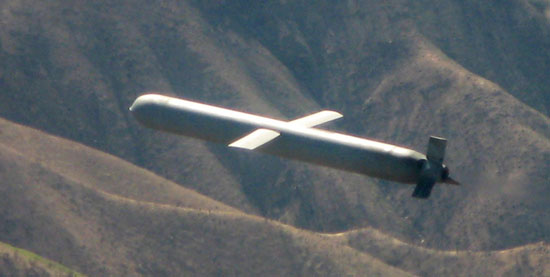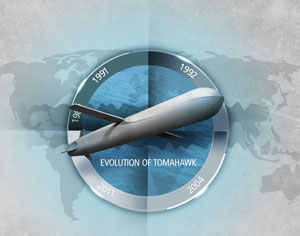
Such retargeting capability will be further enhanced with the new seeker with its full spherical coverage. The new multi-mode seeker technology would allow the Navy’s Surface Action Group to fire Tomahawks from sanctuary and defeat mobile threats at long range.
“This new moving target capability would enhance Tomahawk’s already exceptional land attack mode capability by allowing it to engage moving targets on land,” said Roy Donelson, Tomahawk program director for Raytheon Missile Systems. “Raytheon is providing the U.S. Navy with a missile that can evolve its capability”
With a range of approximately 1,000 statute miles, the Tomahawk Block IV missile is a surface- and submarine-launched precision strike stand-off weapon. Tomahawk is designed for long-range precision strike missions against high-value and heavily defended targets. More than 2,000 Tomahawks have been employed in combat. Tomahawk is integrated on all major U.S. surface combatants, as well as U.S. and U.K. sub-surface platforms, including the Los Angeles, Virginia, Ohio, Astute and Trafalgar-class submarines. The seeker’s capability was validated in a realistic high-density environment after seven months of testing in anechoic chambers.
“Tomahawk is an open architecture ‘truck’ capable of integrating payloads and sensors that have high technology readiness levels. We believe this evolution would align with DOD’s vision of increasing capability while maintaining development costs.” Donelson said.

















